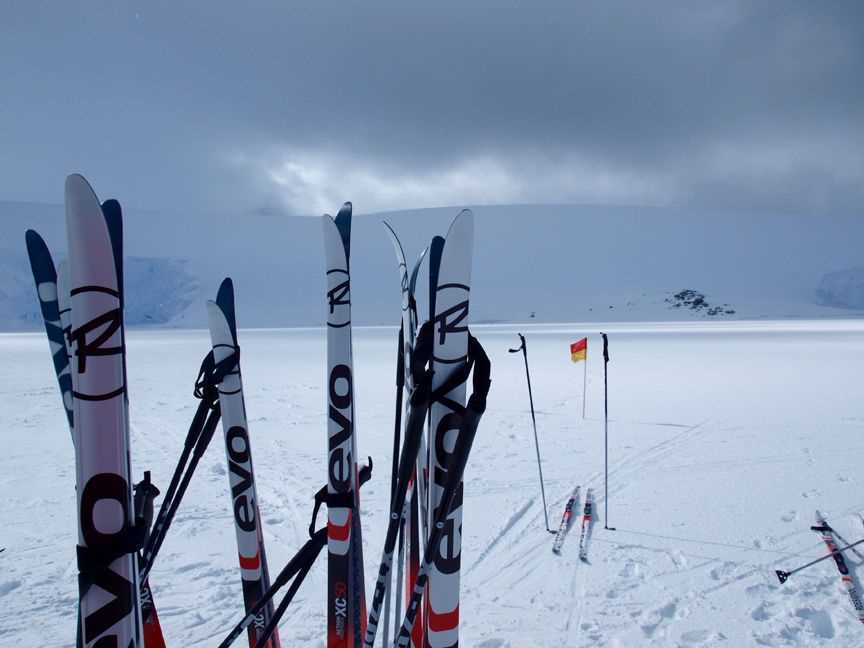Even though National
Geographic Orion was rocking well into the early morning hours with the
“Dead Penguins” band leading a dance party for all ages, she had managed to
stay safely snuggled overnight into the ice of Port Lockroy for the beginning
of our morning activities. The harbor
was named by the French Antarctic Expedition of 1903-1905 under Charcot for a
French politician who helped secure funding for the journey, which just
emphasizes the point that many Antarctic location names are in honor of people
and groups who have never visited the Antarctic, though they were still instrumental
in the exploration of the last continent.
As we began the dual operation of the visit to Bransfield
House and skiing on the fast ice behind Goudier Island, the wind picked up and
the pack ice and icebergs started moving, which necessitated repositioning the
vessel to a more secure location in the harbor.
All went smoothly and both activities continued through the
morning. The museum, post office, and
gift shop at the old Base A of Operation Tabarin provide a great cultural
context to human activities on the Antarctic Peninsula in the middle of the 20th
century, and those who skied had one last taste of the grandeur and (literally)
breathtaking views of the Antarctic Peninsula for our last day on “the Ice”.
We then transited north through Dallmann Bay in the Palmer
Archipelago prior to entering the Drake Passage for our voyage to Ushuaia,
Argentina, and ultimately home. The bay
is a feasting ground for humpback whales, and one pair obliged us with a show
off the bow of the ship. Even though we
saw and experienced so much over the last few days, there always is a twinge of
regret upon departing the peninsula for regions north. While the ice, wildlife, and rocky heights
are fading from view, we still have the vast Southern Ocean ahead of us, one of
the most extensive true wilderness areas on the planet, and a mysterious marine
ecosystem through which we can just cut a narrow furrow.







